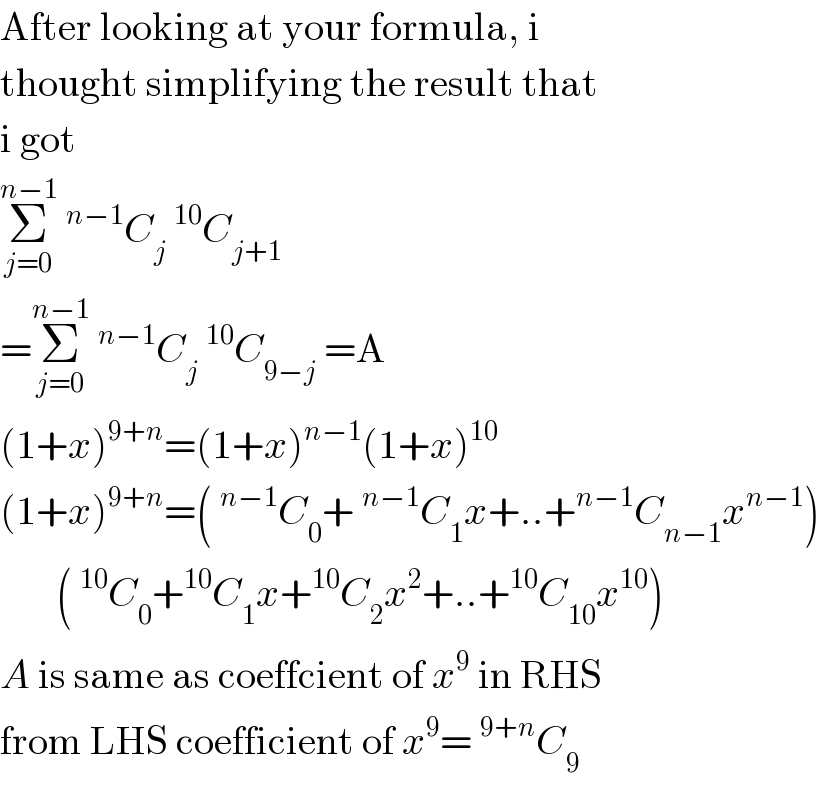
Question and Answers Forum
Previous in Permutation and Combination Next in Permutation and Combination
Question Number 117708 by mr W last updated on 13/Oct/20
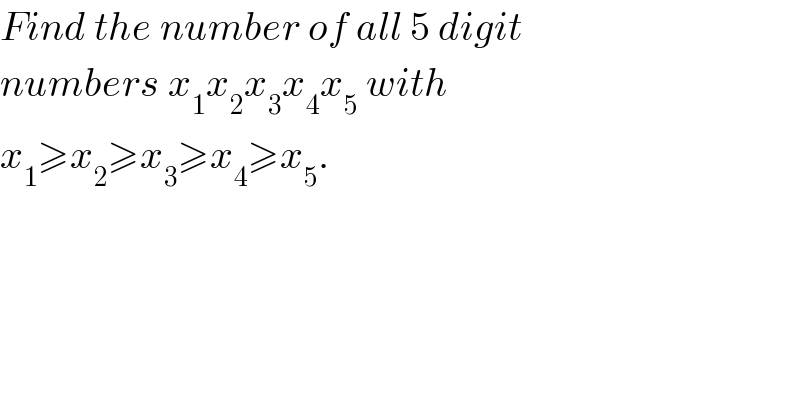
Commented by prakash jain last updated on 13/Oct/20
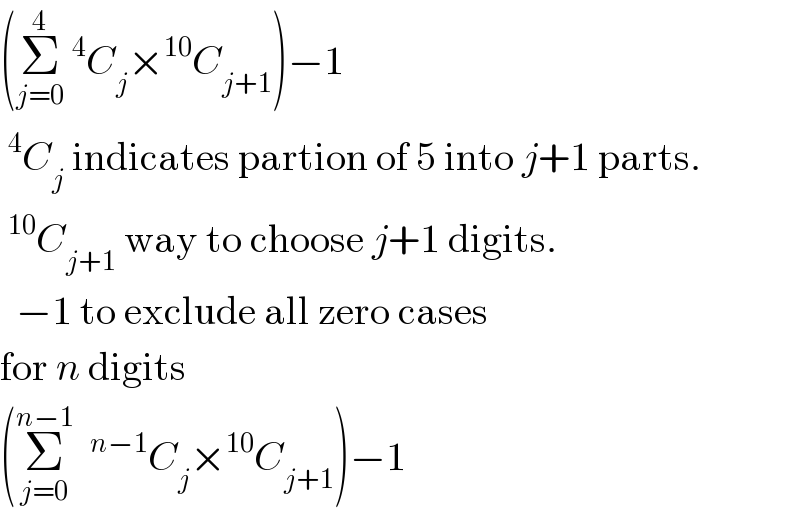
Commented by prakash jain last updated on 13/Oct/20
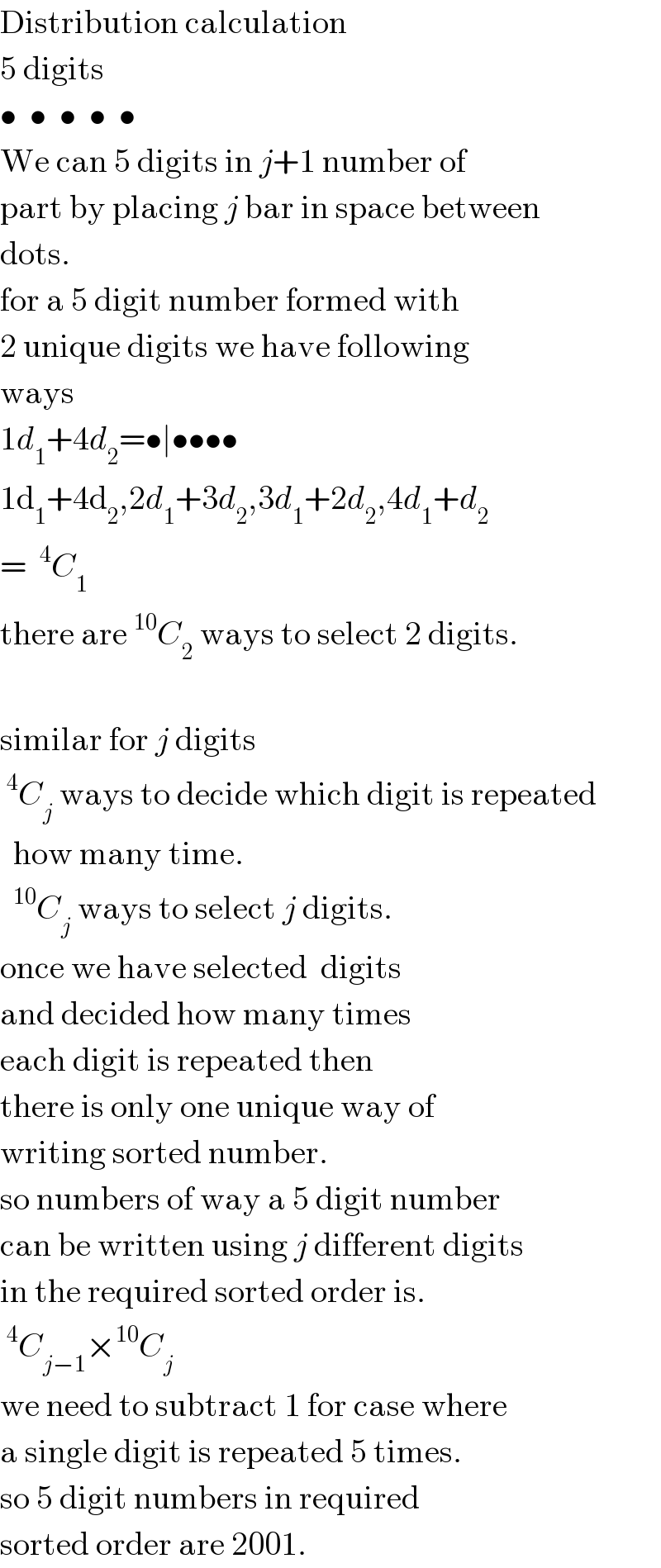
Commented by mr W last updated on 13/Oct/20

Answered by 1549442205PVT last updated on 14/Oct/20

Commented by prakash jain last updated on 13/Oct/20

Commented by 1549442205PVT last updated on 13/Oct/20
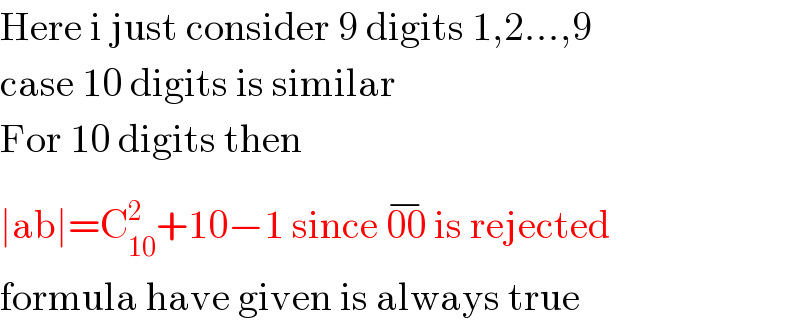
Commented by prakash jain last updated on 13/Oct/20
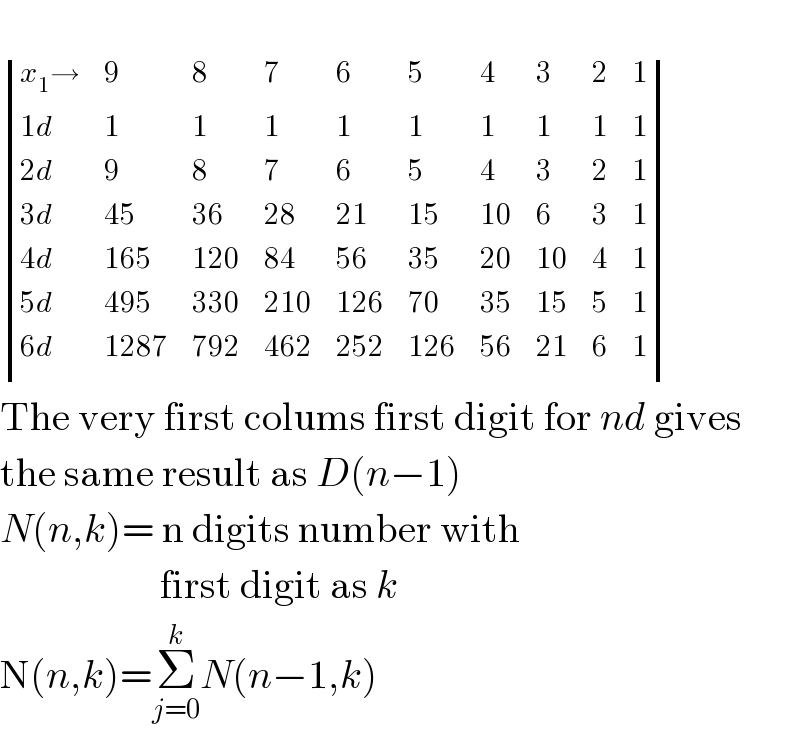
Commented by prakash jain last updated on 13/Oct/20
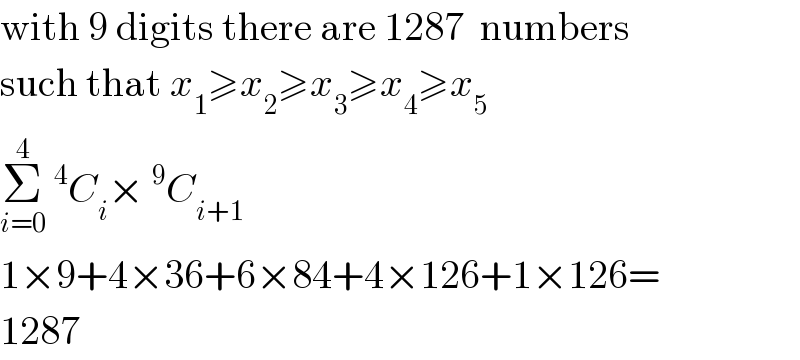
Commented by prakash jain last updated on 13/Oct/20
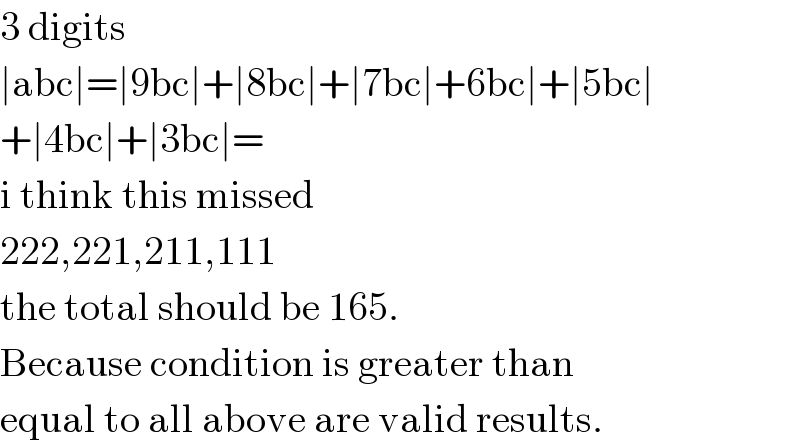
Commented by prakash jain last updated on 13/Oct/20

Commented by prakash jain last updated on 13/Oct/20
http://oeis.org/A000581
Commented by mr W last updated on 13/Oct/20

Commented by 1549442205PVT last updated on 14/Oct/20

Answered by mr W last updated on 13/Oct/20
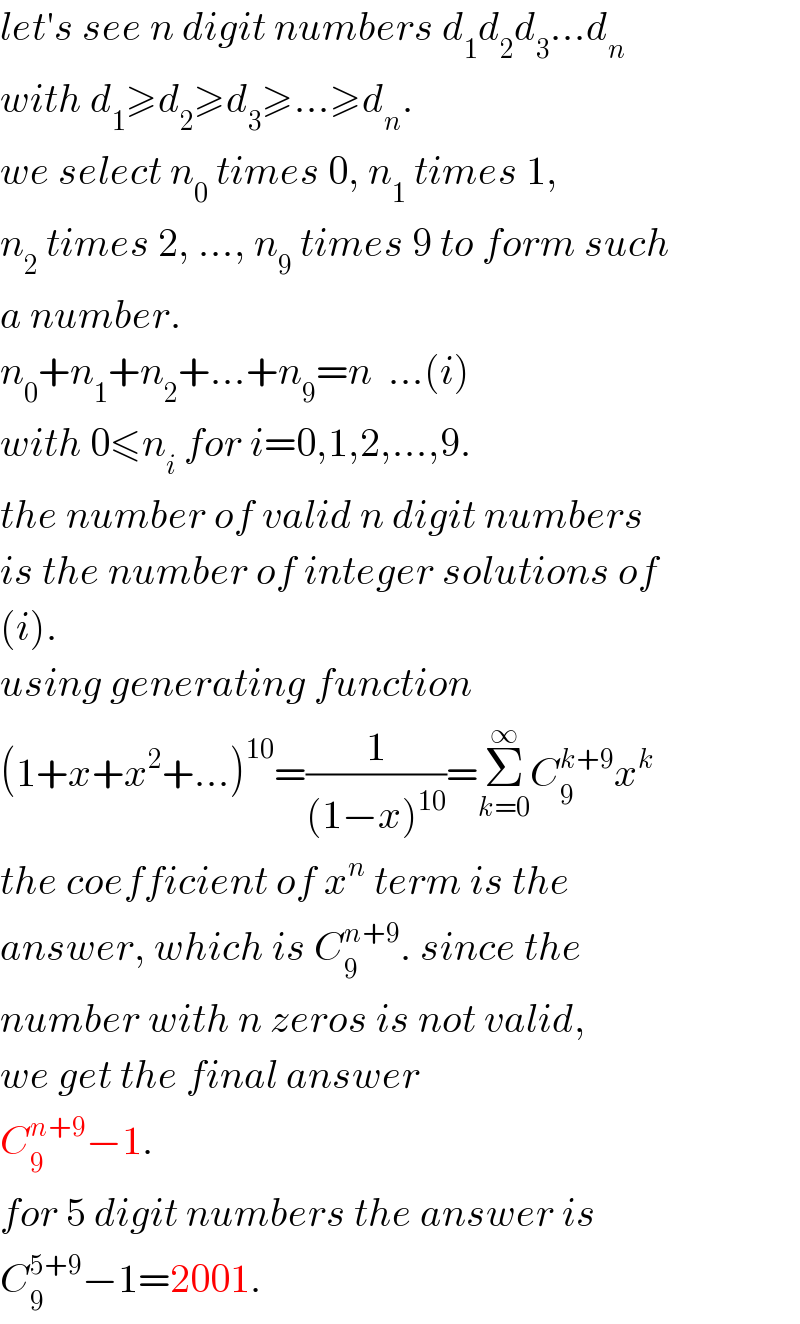
Commented by mr W last updated on 13/Oct/20

Commented by mr W last updated on 13/Oct/20

Commented by prakash jain last updated on 13/Oct/20
